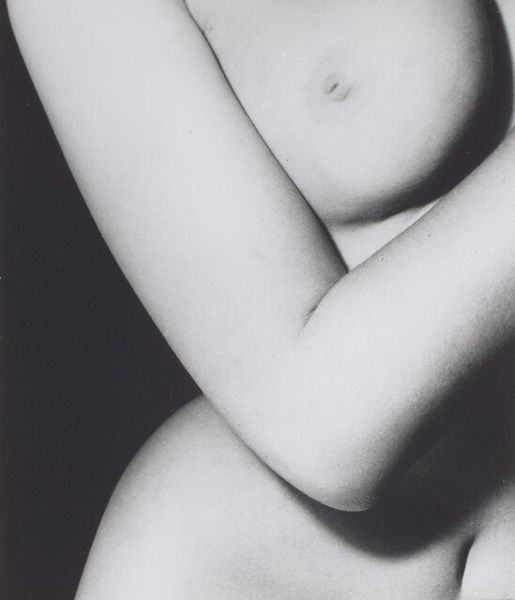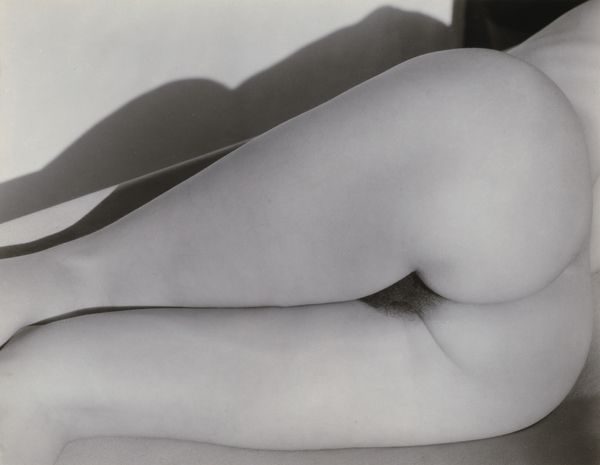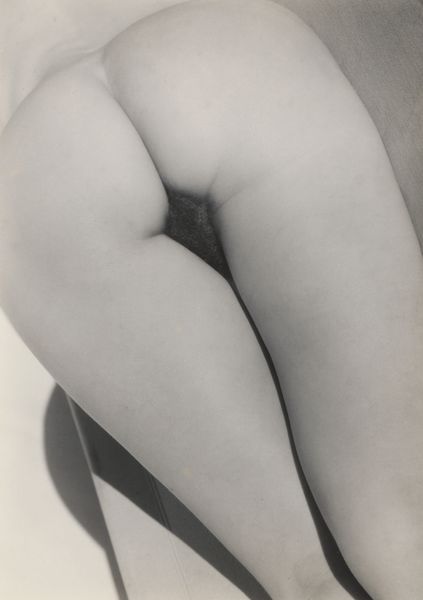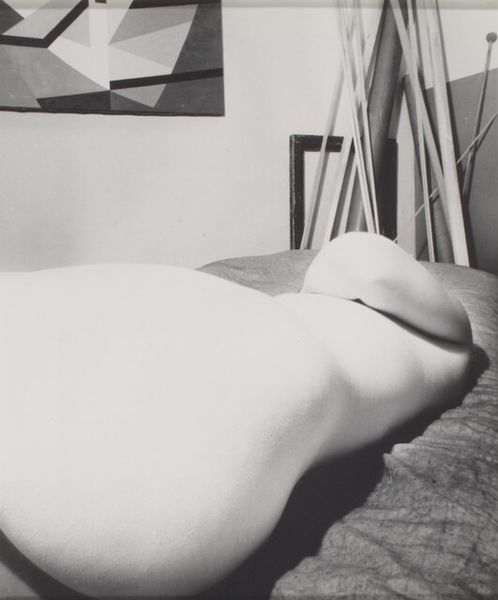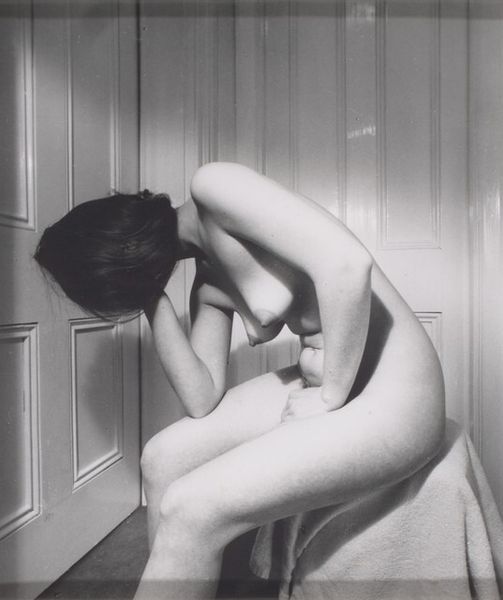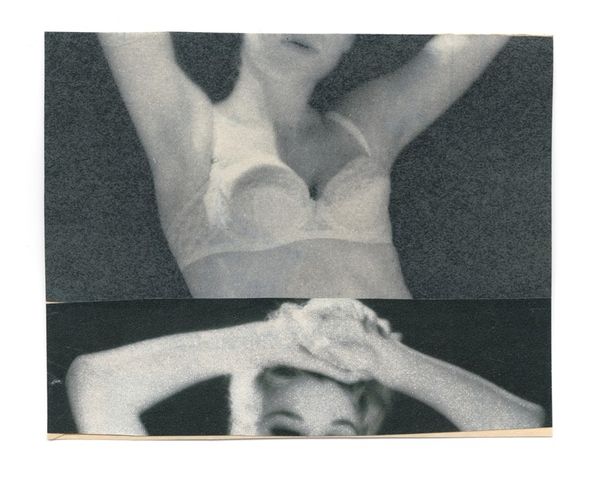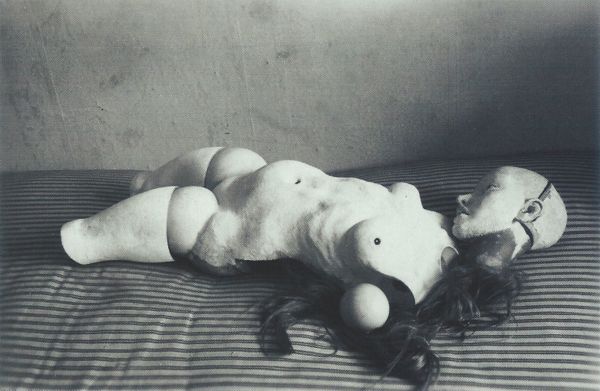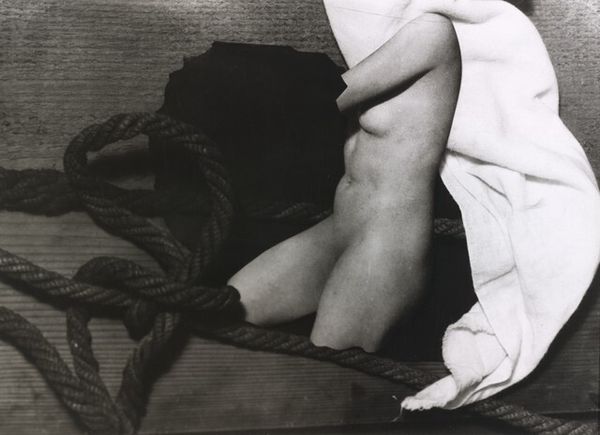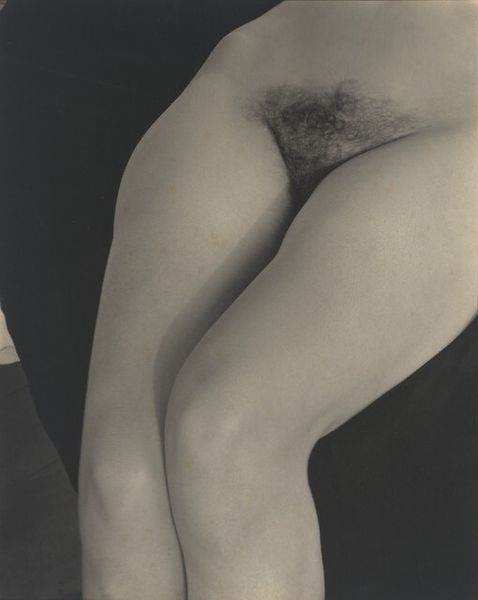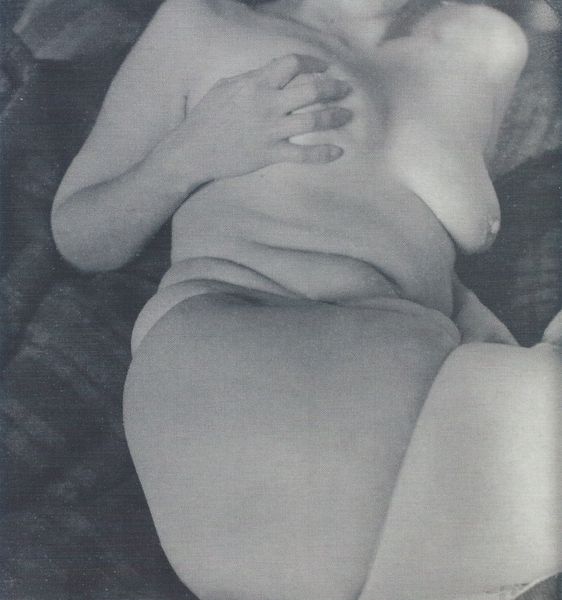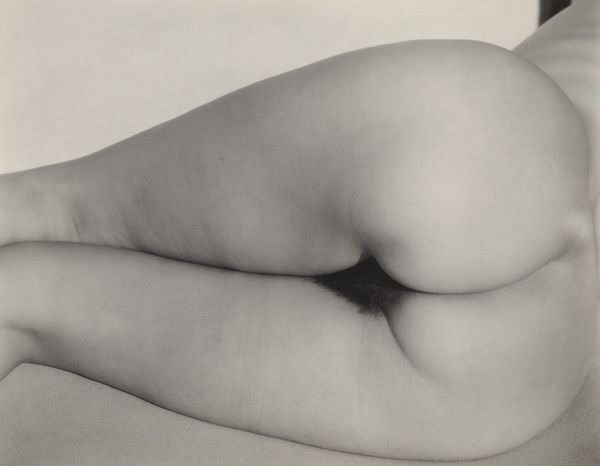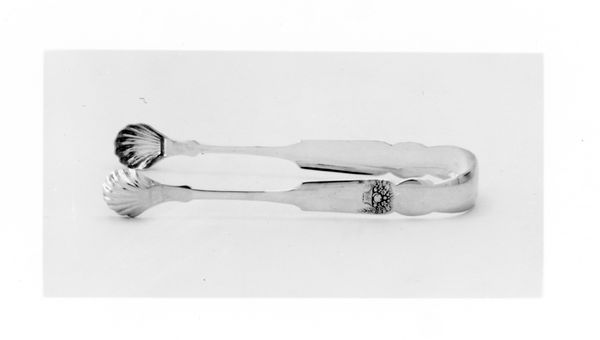
Dimensions: overall: 25.4 x 20.2 cm (10 x 7 15/16 in.)
Copyright: National Gallery of Art: CC0 1.0
Curator: We’re looking at Bill Brandt’s "Untitled (Nude, Campden Hill, London)," a gelatin-silver print from 1956. It’s a striking composition, all soft curves and contrasting shadows. What are your initial thoughts? Editor: There's an undeniable tension here. The stark monochrome amplifies a vulnerability in the pose. This body, fragmented and decontextualized, evokes complex questions about the female gaze. It feels deeply personal, yet also unsettlingly exposed. Curator: Precisely. Brandt masterfully uses light and shadow to abstract the figure. The lack of identifiable features focuses the eye on the sculptural quality of the body itself—almost a study in form. Notice how the curves of the limbs echo each other, creating a rhythm within the composition. Editor: But that abstraction also allows the photograph to be read within the context of its time. The 1950s held complex views of female sexuality and societal expectations. This image, intentionally or not, contributes to the ongoing conversation about the objectification of women in art. Whose gaze does this photograph cater to? Curator: One could argue that Brandt isn't necessarily objectifying, but rather exploring the human form as a landscape. He crops the figure tightly, eliminating the head and feet, to emphasize shape and texture. He plays with the tonal range of the gelatin silver print, pushing the boundaries of light and dark to create an image that borders on surreal. Editor: Yet that “exploration” inevitably engages with power dynamics. This image exists within a history of nude photography—predominantly male artists depicting female subjects. Where is the agency here? The body is present, but the individual remains hidden, rendered passive. Curator: Perhaps, but I see a power in that ambiguity. The absence of context invites us to project our own interpretations onto the image, focusing purely on the interplay of form, texture, and tonality. It is a composition stripped down to its barest essentials, revealing an underlying structural harmony. Editor: Stripping it down can also be an act of violence. The photographic nude, regardless of aesthetic value, is always loaded with historical weight and potential exploitation. It's crucial to view this piece through that critical lens. Curator: It is definitely an interesting juxtaposition of form and potential sociopolitical undertones. It asks the viewers to consider what art can teach them, even implicitly. Editor: And what those lessons might perpetuate! Hopefully we've started some worthwhile discussions here for listeners.
Comments
No comments
Be the first to comment and join the conversation on the ultimate creative platform.
